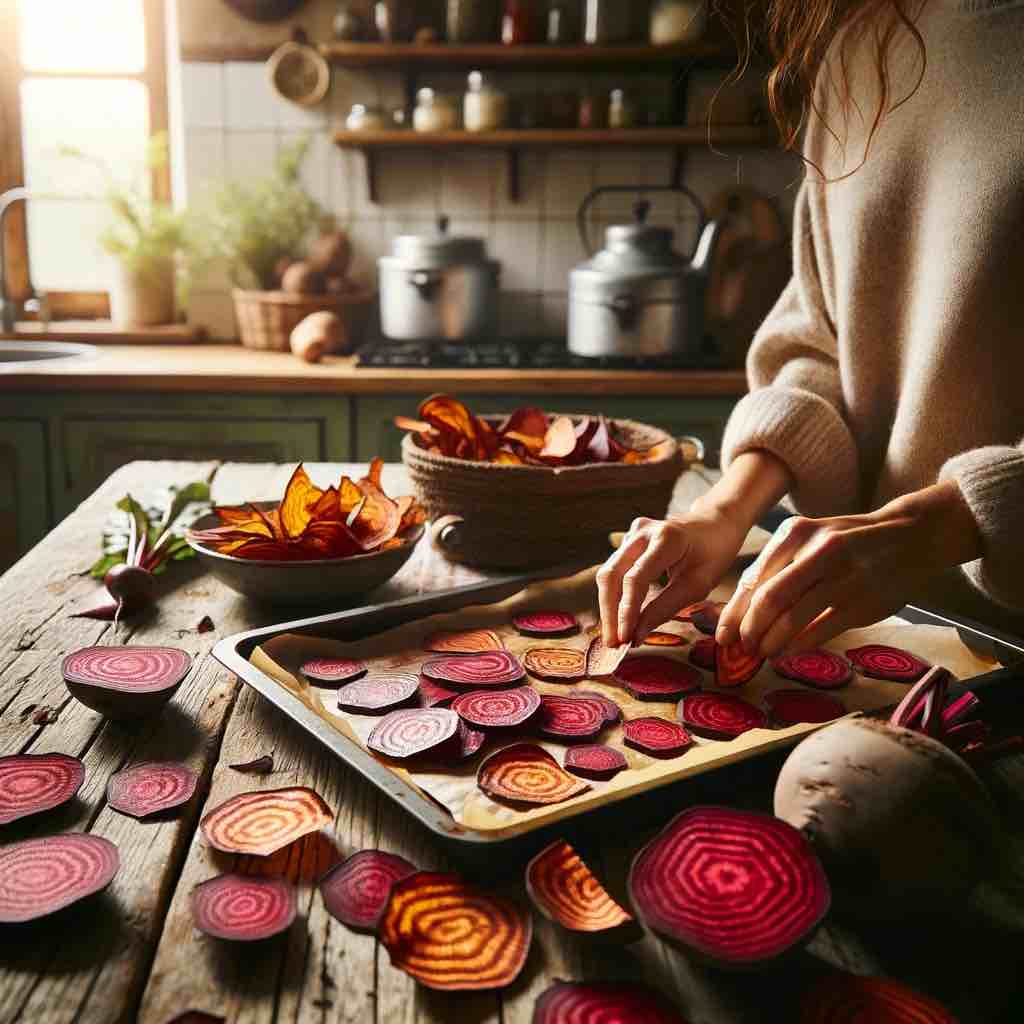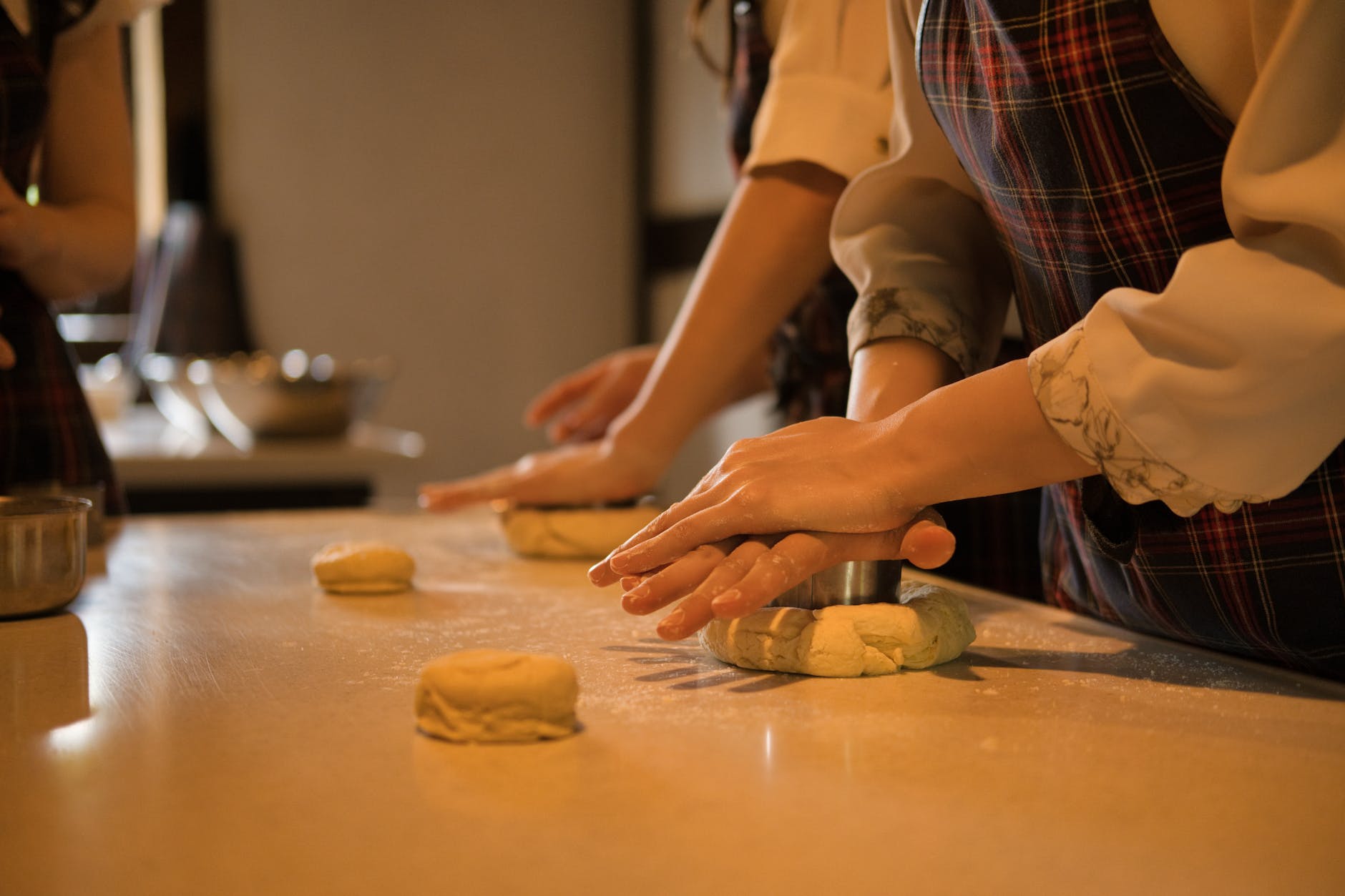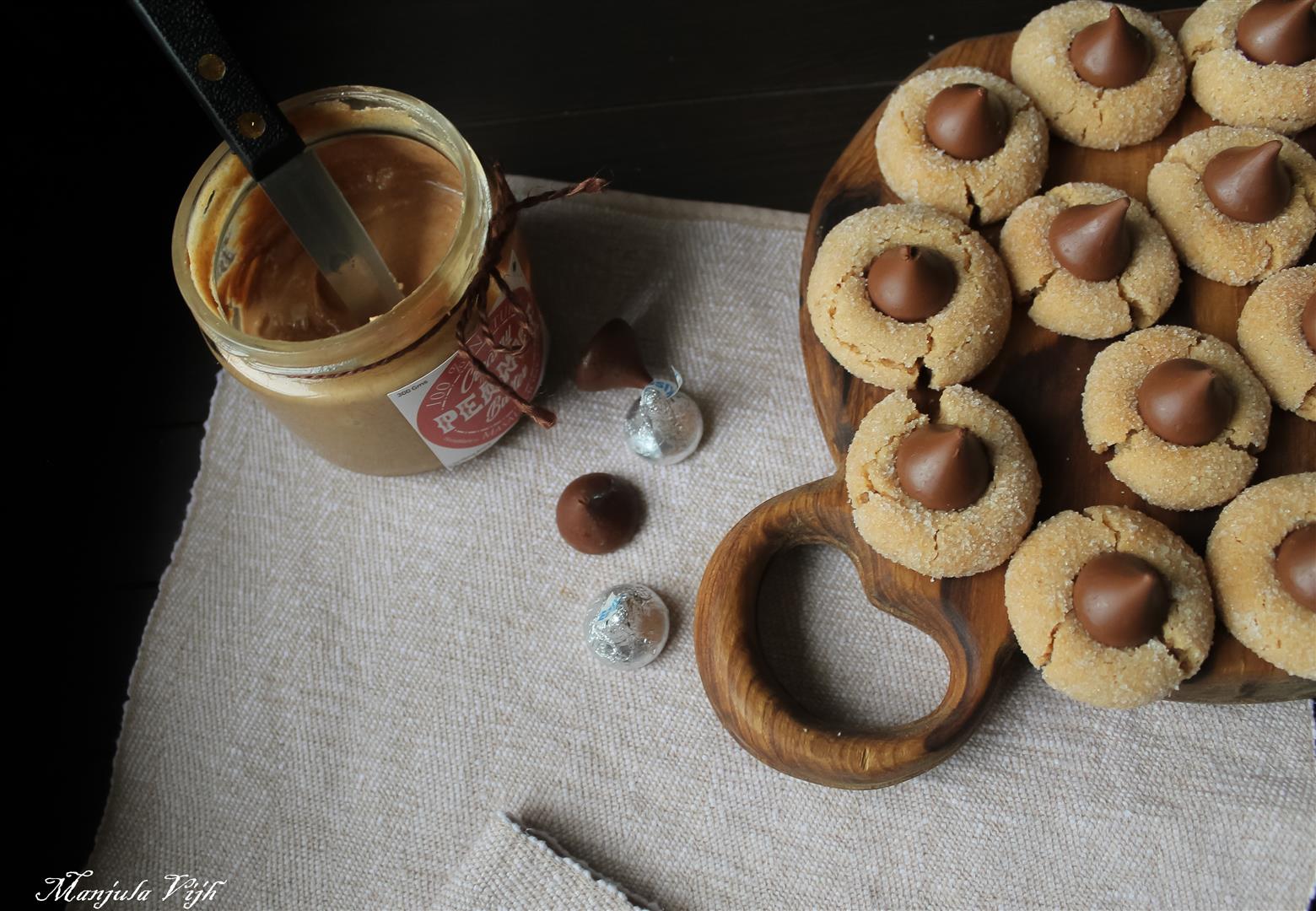
Traditionally called as “Peanut Butter Blossoms”, these are soft, chewy peanut butter cookies, rolled in sugar and then topped with a Hershey’s Kiss Chocolate!
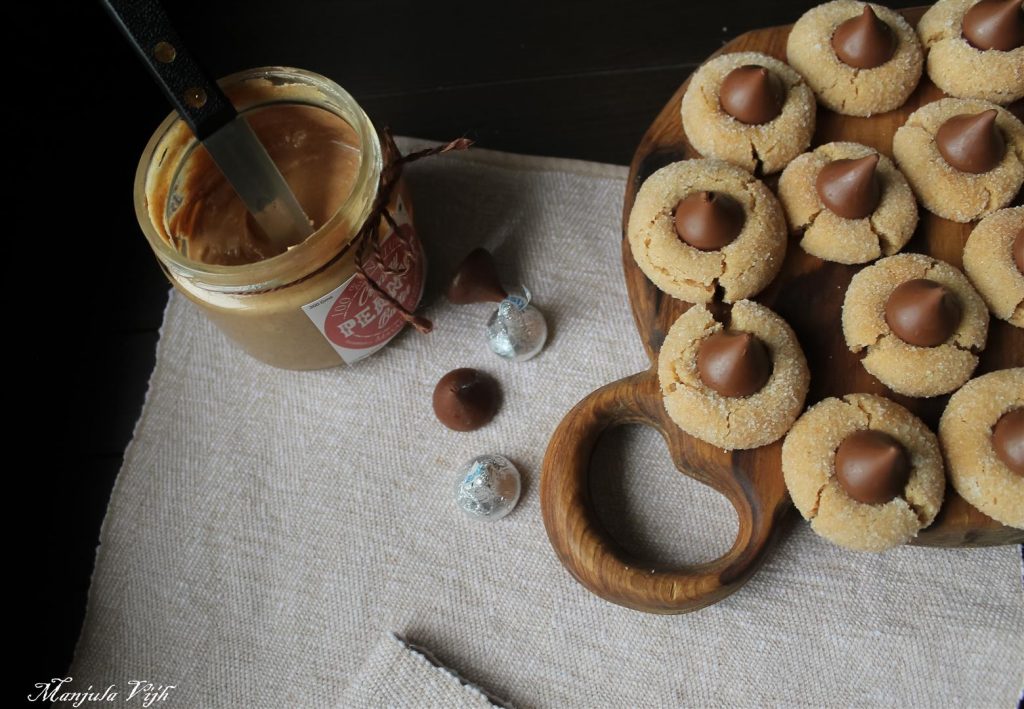
Like the serving board? Check our range here : Good With Wood
It was during one lazy winter afternoon, while I was surfing the internet for some cookie recipes, that I came across these beauties. I had never worked with peanut butter as the main ingredient for cookies, but these looked so beautiful that I couldn’t resist giving them a try.
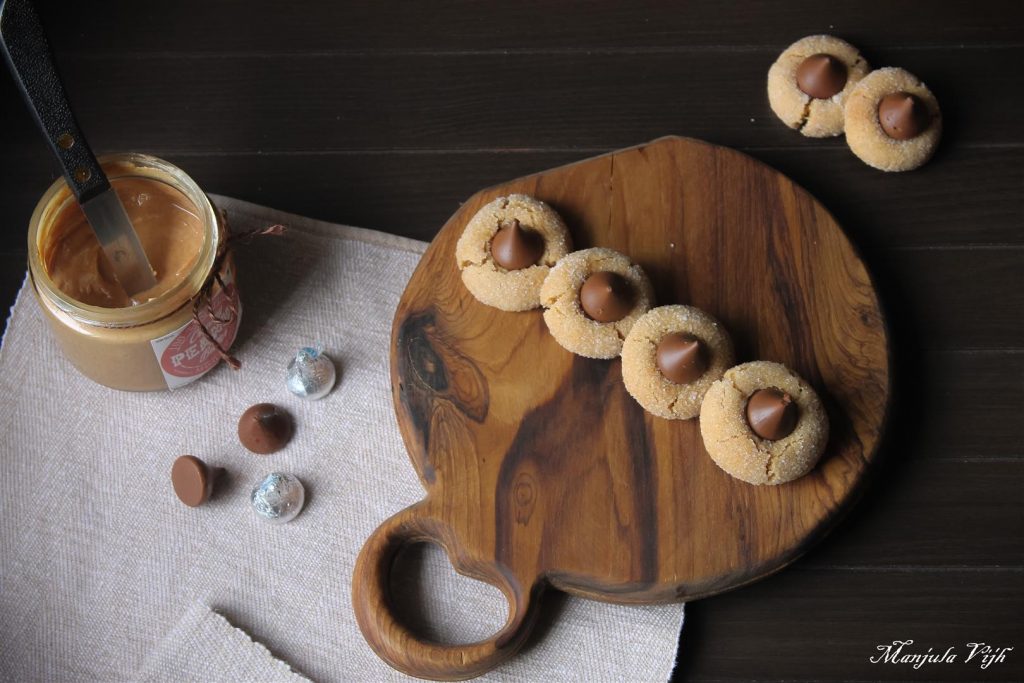
Like the serving board? Check our range here : Good With Wood
The recipe for these lovely looking cookies was first developed in 1957, by Mrs. Freda F. Smith of Gibsonburg, Ohio for the Ninth Grand National Pillsbury Bake-off competition. It’s an American classic recipe and many versions of this recipe are available online. My recipe is inspired from the one given on Hershey’s website, but since I am a vegetarian, I have modified the recipe to be an eggless one. These are chewy from the center and crisp from outside, and since these are topped with Hershey’s Kisses, I have named these cookies as, “Kiss the Cookie!”
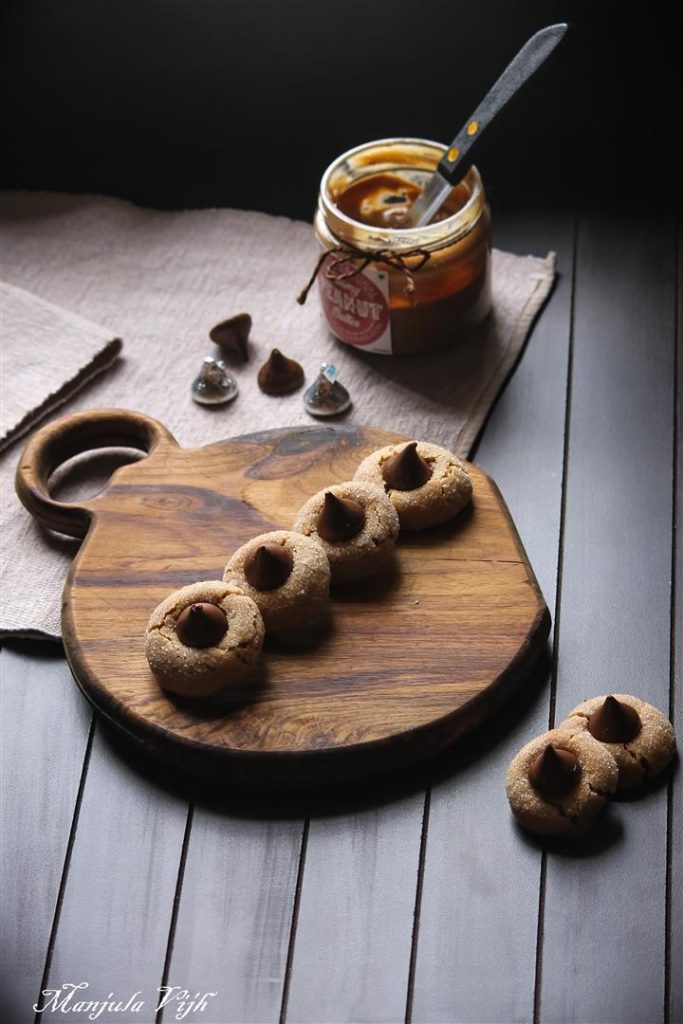
Like the serving board? Check our range here : Good With Wood
When I first tried this recipe with one of my friends, I made them with store bought peanut butter. They came out nice but were little extra sweet. This time I tried them with the Natural Homemade Peanut Butter curated by Mr. Mohit Arora, which is available at Masala Monk. The peanut butter by Masala Monk has the right amount of salt and sugar unlike store bought peanut butter. The cookies came out to be perfect sweet and soft! They look lovely when presented and you can also gift them to your loved ones during festival time!
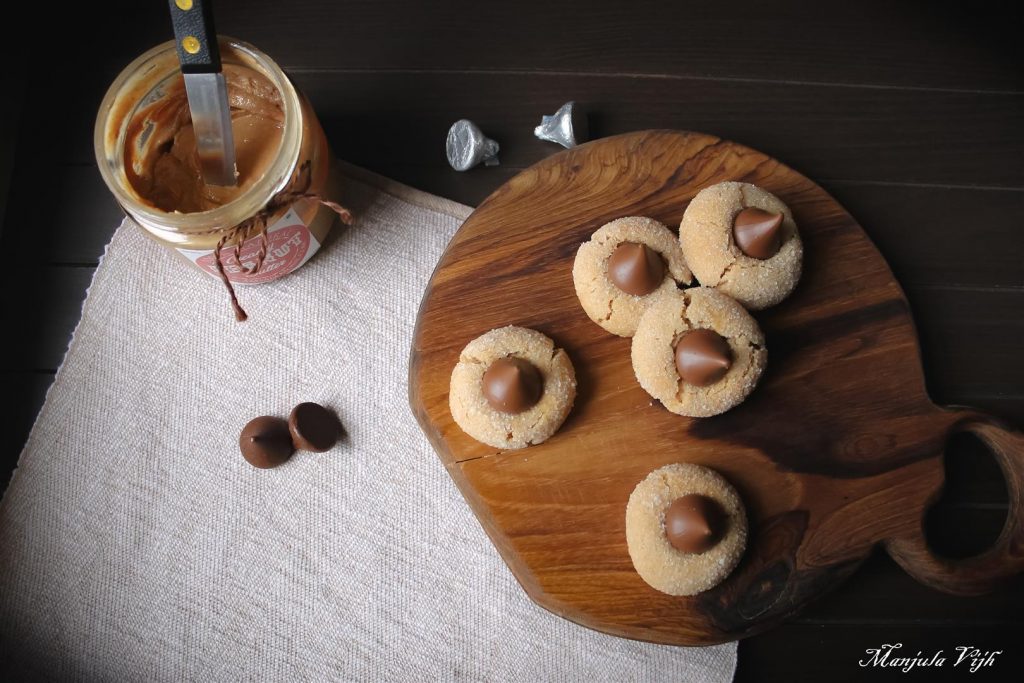
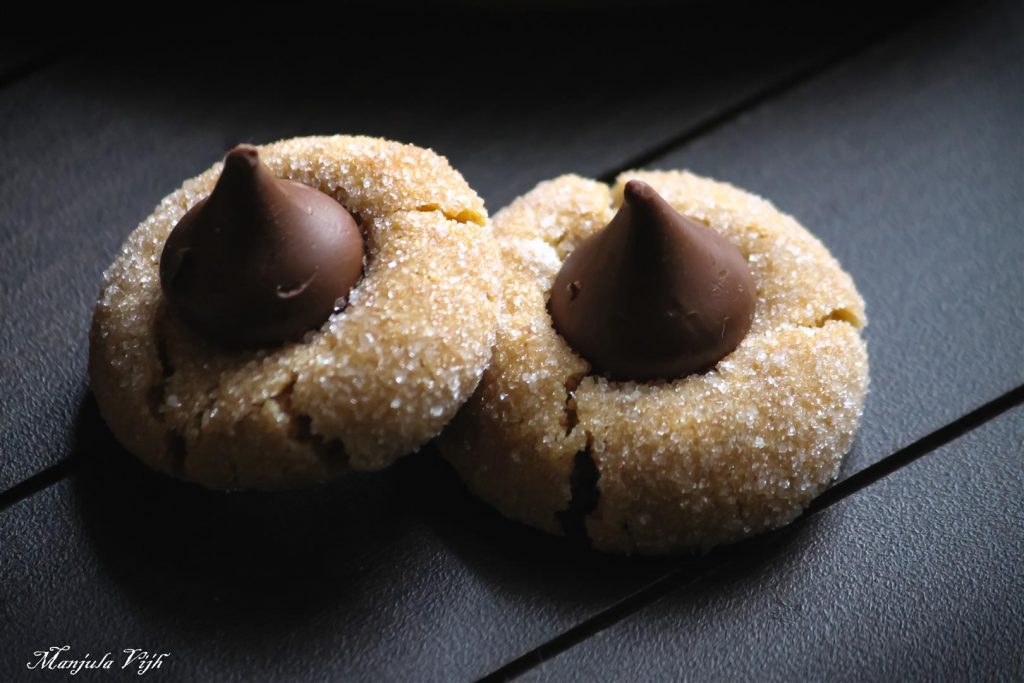
Like the serving board? Check our range here : Good With Wood
KISS THE COOKIE
Preparation time: 20 minutes
Cook time: 10 minutes
Serves: 40-45 cookies
Ingredients
- Condensed Milk: 1 Can (400 gm.)
- Peanut Butter: ¾ cup
- All Purpose Flour: 1.5 cup
- Baking Powder: 1tsp.
- Butter(softened): ½ cup
- Vanilla extract: 1tsp
- Caster sugar for rolling the cookies: ½ cup
- Hershey’s kisses: 40-45

Instructions
- In a medium bowl whisk together, flour and baking powder.
- In another bowl cream together, butter, peanut butter and vanilla to mix them well.
- Add the flour and make a dough. If, you are mixing with hands, and the dough sticks to your hand you can sprinkle some flour, apply butter to your hands and then again mix. You can taste the cookie dough too!! I did and it tastes great!
- Chill the dough to set. Cling wrap it and then keep it in the refrigerator for few hours.
- Preheat the oven at 190ºC.
- Shape dough into 1″-1.5″ balls, roll it in finely granulated caster sugar, and keep them into a baking tray.
- Bake the cookies at 190ºC for about 10-11 minutes, till cracks appear on sides. Do not over bake them. These cookies will not get brown in color.
- Meanwhile unwrap Hershey’s Kisses.
- After the cookies are baked, take out the baking tray, and gently press one kiss on each cookie. The warm cookies will melt the chocolate a little, but it will set after a while.
- Transfer the cookie onto a wire rack for cooling
- Store it in an airtight container.
Notes:
** Please check your oven temperature for baking.
** You can use a small ice-cream scoop, or a melon ball scoop to take out equally sized dough balls. I used one of my measuring spoons.
** You can keep the cookie dough cling wrapped for 2-3 days.
** If you want to cut down the recipe to half, you can do so. It works fine! I suggest to start with half the recipe if you are baking them for the first time.
** Use softened butter and not melted butter. I made this mistake and result was flat cookies.
** Chill the cookie dough before baking.
** If the chocolate falls of the cookie, you can dab little peanut butter on the bottom of the chocolate and press it back.
References:
https://abountifulkitchen.com/peanut-butter-blossoms/
http://americanheritagecooking.com/2014/12/peanut-butter-blossoms/
https://www.hersheys.com/kitchens/en_us/recipes/chewy-peanut-butter-blossoms.html


